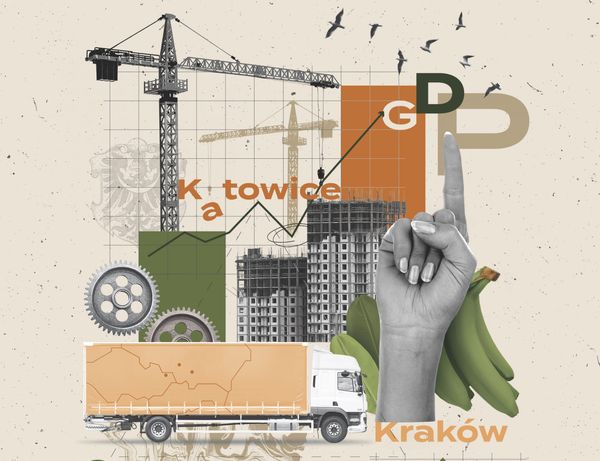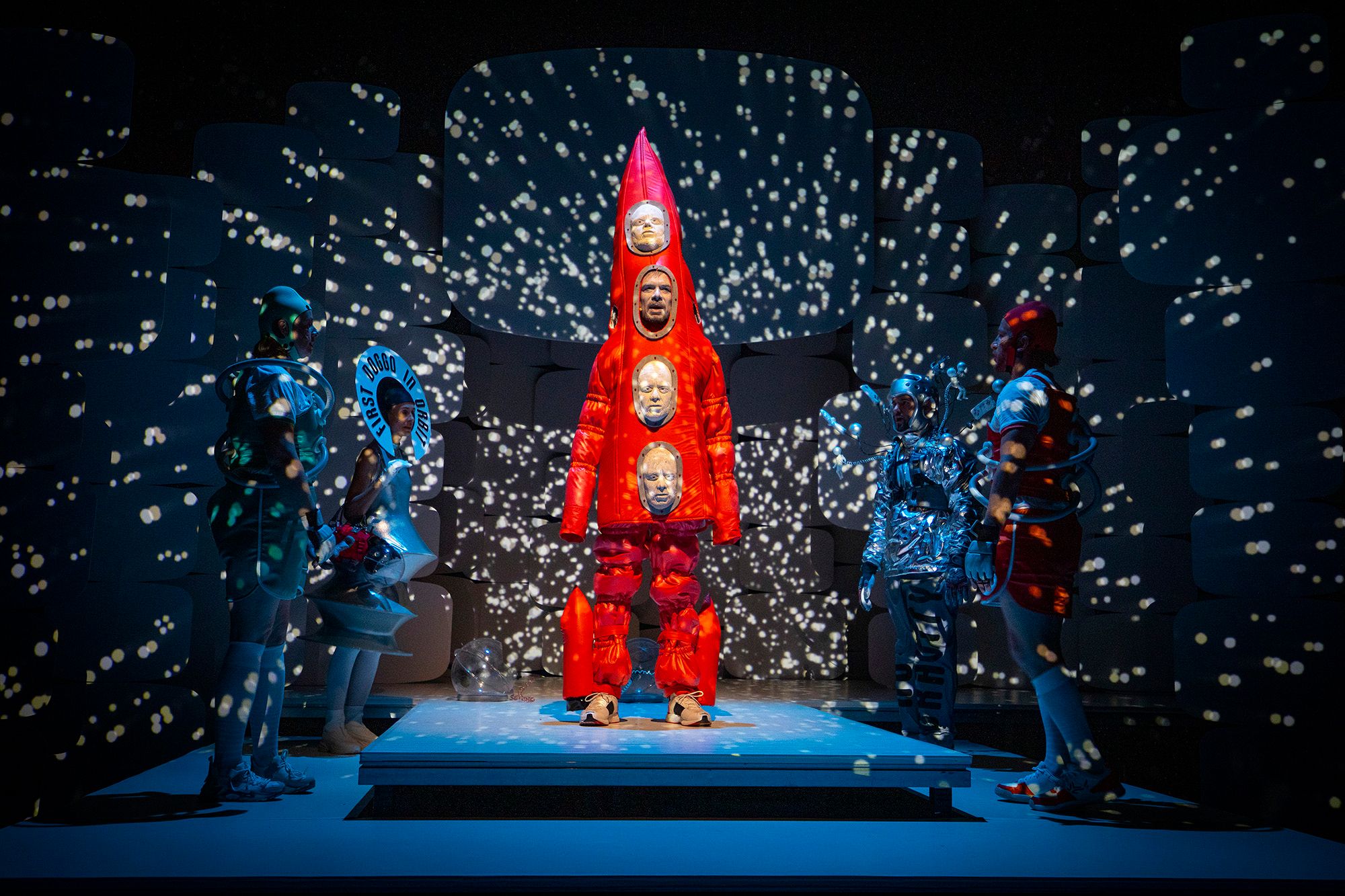Sohróza’s most recent performance, Keleti blokk (Eastern Bloc), staged in Trafó theater in Budapest, infuses the future with the aesthetics and souvenirs of the Visegrad Four’s communist past. It is based on the reverse of dystopian reminiscing and is accompanied by hilarious humor.
Another catwalk concert by the Soharóza Choir and Catwalk Concert Production was premiered at Trafó, one of the most significant institutions of contemporary theater in Budapest. The core concept is that contemporary choral works are accompanied by stunningly elaborate, humorous, and expressive costumes, which in themselves already qualify as works of art. The genre was created in 2015 by costume designer Fruzsina Nagy and musician Dóra Halas, the directors of the piece, and is roughly the crossover between theater, a choral concert, and an extreme fashion show.
More than a ‘housing project romance’
Keleti blokk was an international collaboration: the common socialist-communist past of Hungary, Slovakia, the Czech Republic, and Poland was the starting point, and collaborators from each of these countries came together to work on the production. While humor and nostalgia were important elements, the main intention was not so much a self-serving evocation of the past, but to start a dialogue, and to ask why and how this is relevant to our lives today.
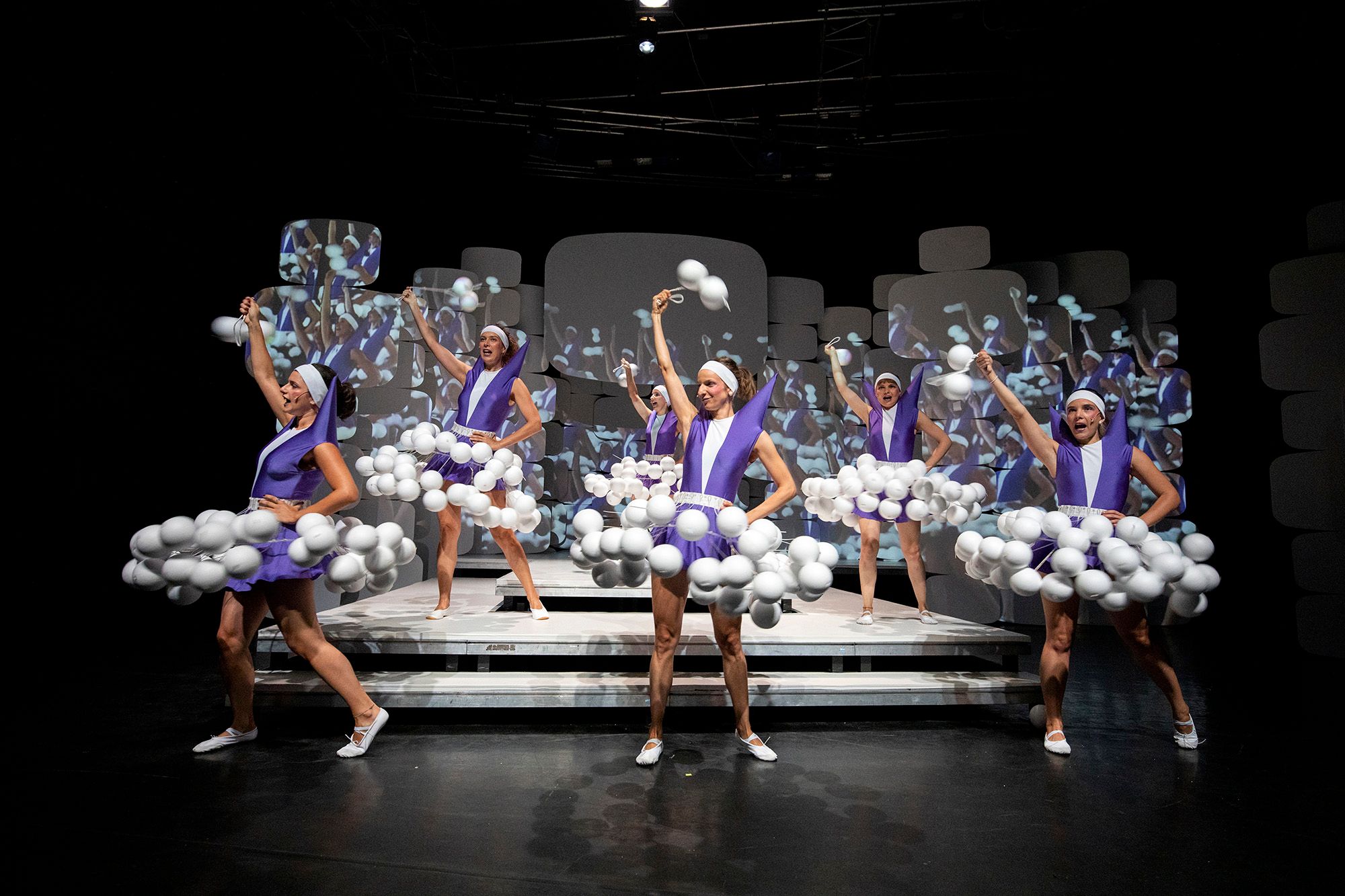
Futurist socialist realism
From the very first image of citizens looking like sacks of potatoes dragging themselves onto the stage to the droning tunes of the Song of the Volga Boatmen, it was clear that the inhabitants of Kozmicke Kormorán, the dream state of the United East from the imagined future, could not be a happy lot. But the citizens, divided into the groups of “tulipán”, “tulipánik”, and “tulipánka” (both a reference to socialist era culture and wordplay on tulips and panic—the Tr.) woke up to a big day: it was the anniversary of the founding of their beloved motherland, the Fúzió (Fusion). This served as the central theme of the show, with a celebratory broadcast on the only existing TV channel. The cohesive force of the evening was the announcer of TV Csteri, Szlodki Paplanyina, played by Kata Pető, who looks like if Júlia Kudlik (a famous Hungarian socialist era TV host—the Tr.) had a lovechild with The Jetsons. With her heavily lacquered blonde wig, cat-eye style glasses, and shoulder-padded blazer, she delivered a mean impersonation of the state apparatus’s hypnotic mouthpiece. She fell out of character for only a single moment: when, at the end of the broadcast, she wished her viewers to dream freely—getting duly frightened, of course, by her own words.
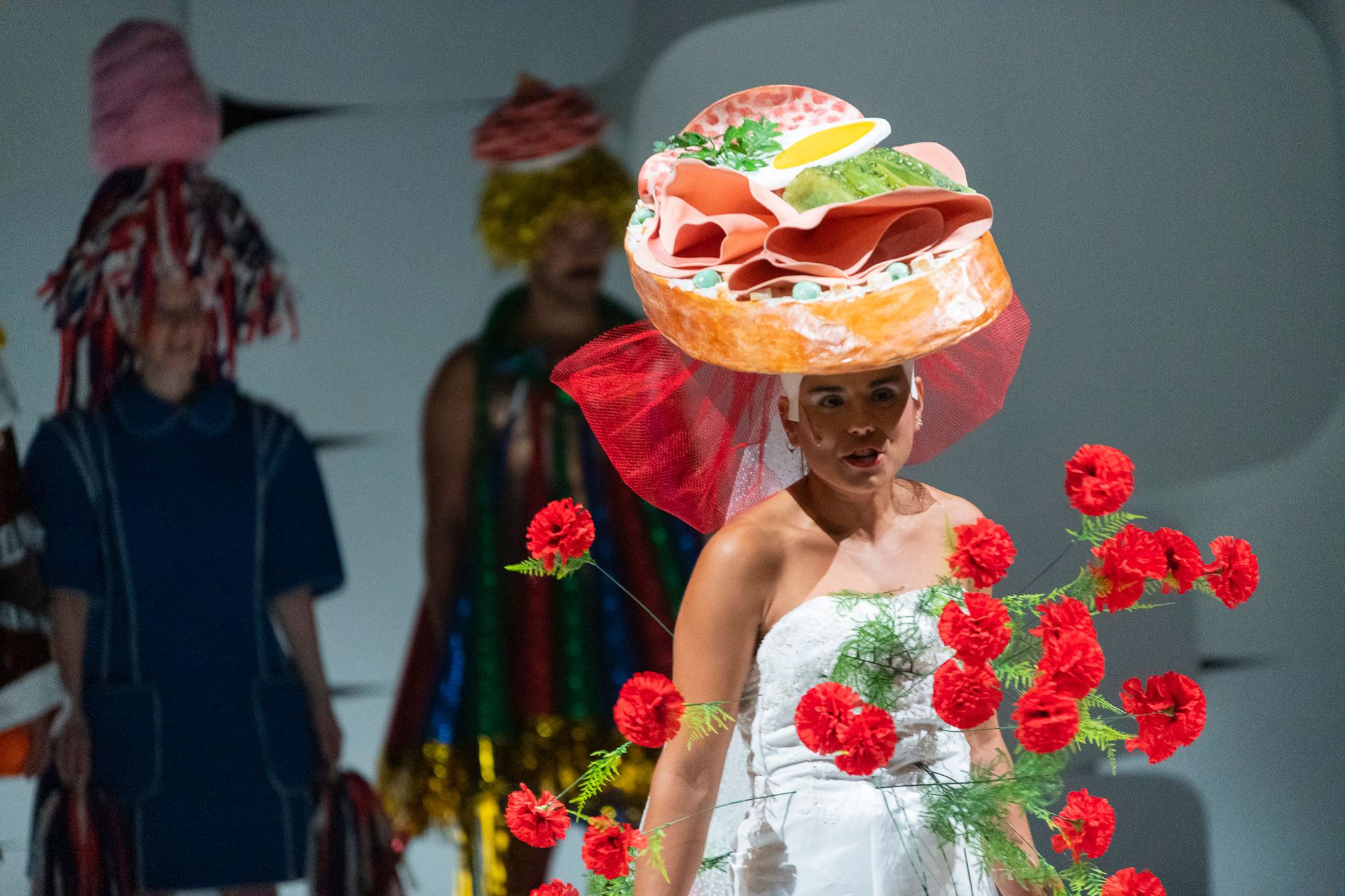
“Festival of Dance Music” Reloaded
It being a festive show, the acts came back to back in a whirlwind. First came the costumes embodying the holidays: international women’s day with red carnations (what else) and a hat resembling a party sandwich made of “French salad,” hard-boiled eggs, and baloney (all classical elements of the low-end gastronomy of the period—the Tr.) All that was missing was a spot of Piros Arany (a cheap, tubed paprika cream—the Tr.) for perfection. There was also an old-school tin-foil-wrapped-Christmas-candy-looking Santa (although the non-religious ‘Father Winter’ denomination would have been a more accurate), New Year’s Eve ornamented with wieners, May Day with cotton candy, and the State Foundation Day with cake and bottles of vodka. The retro aesthetic of the Balaton (here “Lalaton”) holiday was also a must, arriving with inflatable rubber mats, floats, toys in all quantities, and even a tent recycled as a costume. As we learned from the announcer, this is where the eastern and western “Němec” (old derogatory Russian term for Germans—the Tr.) can unite on holidays. In the following didactic scene the curly-haired, briefcase-handling, stern-looking foreigners dropped their clothes and joined together in an embrace. Meanwhile, they screamed along true, thumping German techno as if they had stepped out of a Rammstein music video. The segment billed as a religious show brought along the space race: astronauts prostrated in front of the big red rocket, where a glittery edition of Laika (“First doggo in orbit”) equipped with bag handles floated in zero-g. After a TV workout and a weather forecast promising sunshine for the evening fireworks, came the biggest crowd-pleaser, judging by the volume of the audience’s laughter: the bedtime story. Here, the animation was made based on children’s drawings quite like in Égből pottyant mesék (a classic children’s show, this time from the 90s—the Tr.) and ended with a big spit after the gurgled tunes of a well known TV-show, delivering another layer of references.
Intoxicating ideas
The editors of the fictitious show must have also thought that by the end of the program, the audience would be mostly asleep in front of their TVs and only the hardcore patriots were still glued to the screen, so they tuned the last few scenes to The Communist Manifesto of Marx and Engels. MPs rapped about the specter of communism in their ushanka, and then Kata Pető, dressed as the oxymoron of the communist Statue of Liberty, gave out red candy as a state honor, turning the lethargic ‘tulips’ into happy little Scouts. Apparently, you can’t build a decent dystopia without happy-pills: just as the moody citizens of the future in Aldous Huxley’s Brave New World dropped soma, the Kormoráners were gobbling up the “state reward,” which looked a lot like raspberry hard candy.

The system builds
At one point, the fashion show turned into a housing show, where we got a glimpse of the dream homes of the citizens of Kozmicke Kormorán. It was one of the most impressive numbers of the costume parade: the line-up included an A-frame tiny wooden house, a hip-roofed Kádár-cube (elementally simple detached houses built in the Kádár-era—the Tr.), and even a brutalist modern building with curtain rods, house plants, TV-antennas, topped off with a “panel” (socialist era concrete block of flats—the Tr.) decorated with a sea of grey windows.
“Grease crackles in the tiny pan
A Kádár-cube is your home then
My steel-concrete base loves the bricks
Look there, tiny room
Crystal sparkle, bobs, and bits.”
(Free translation—the Tr.)
—sings the choir by the panel-costumes, this time in Hungarian, while most of the lyrics are written in a playful, Russian gibberish language, in tune with the international rumpus. And what could have been the closing image but a man-sized monoscope—another emblem that, like much of the performance, could only be truly understood and appreciated by those who were old enough to remember these tiny visual gags from the early 1990s.
More dates and tickets here.
Opening image: Attila Dubniczki
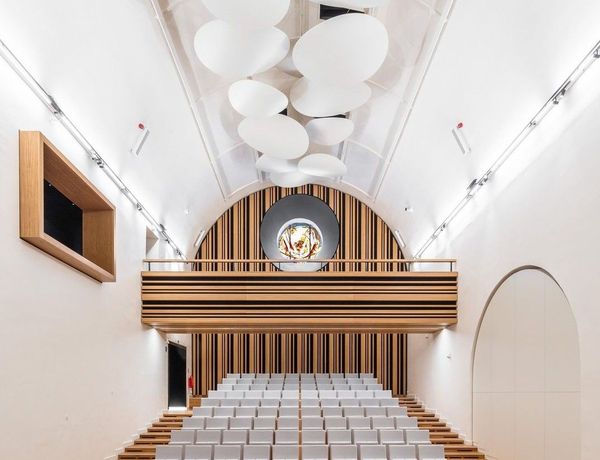
From a sacred space to a concert hall—The rebirth of a church interior

One of the largest travel agencies for accommodation reservations in CEE will go to Polish hands
